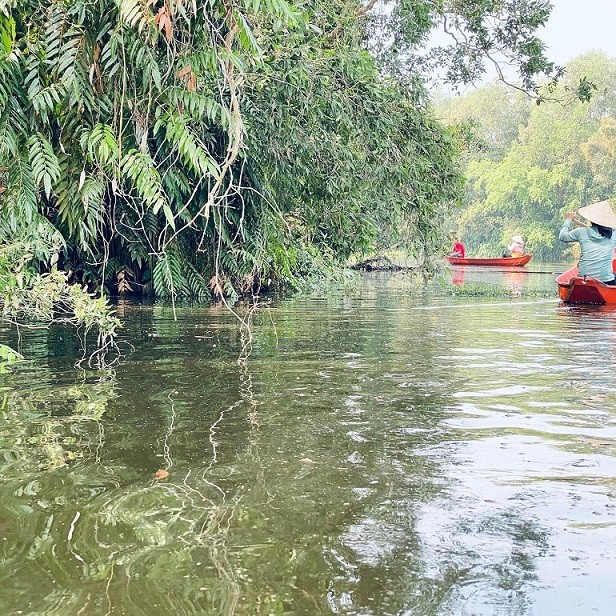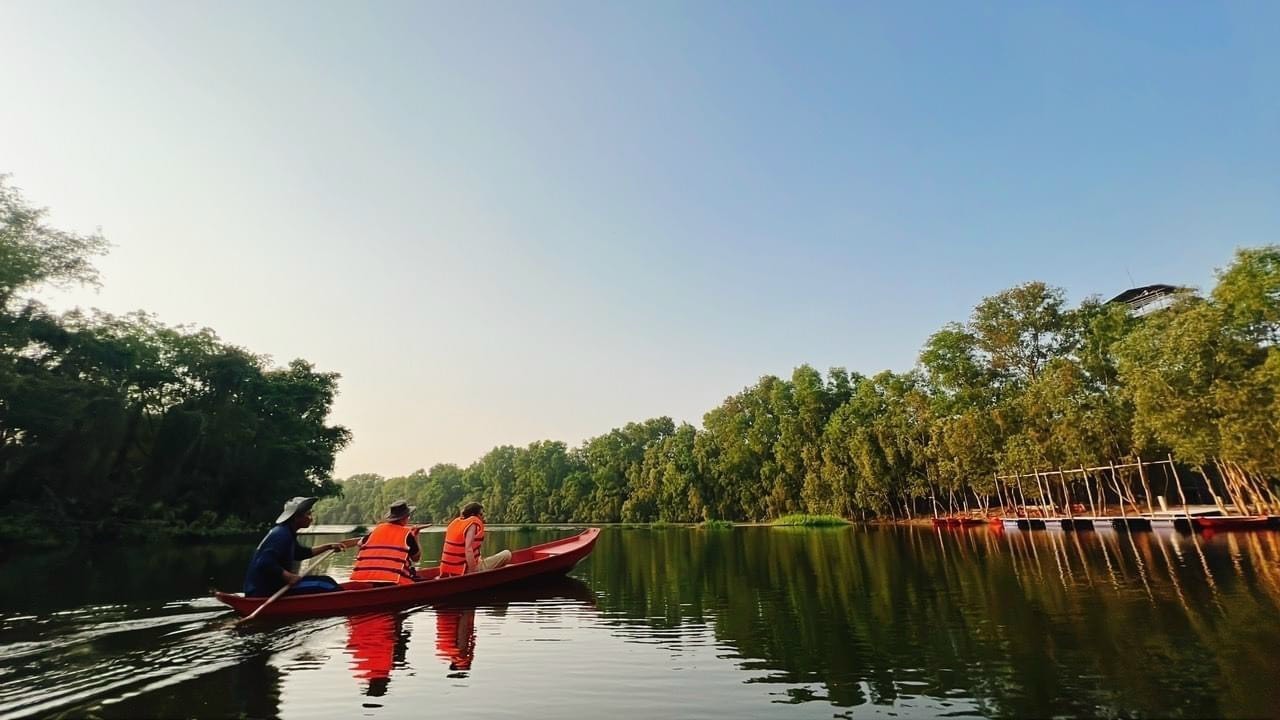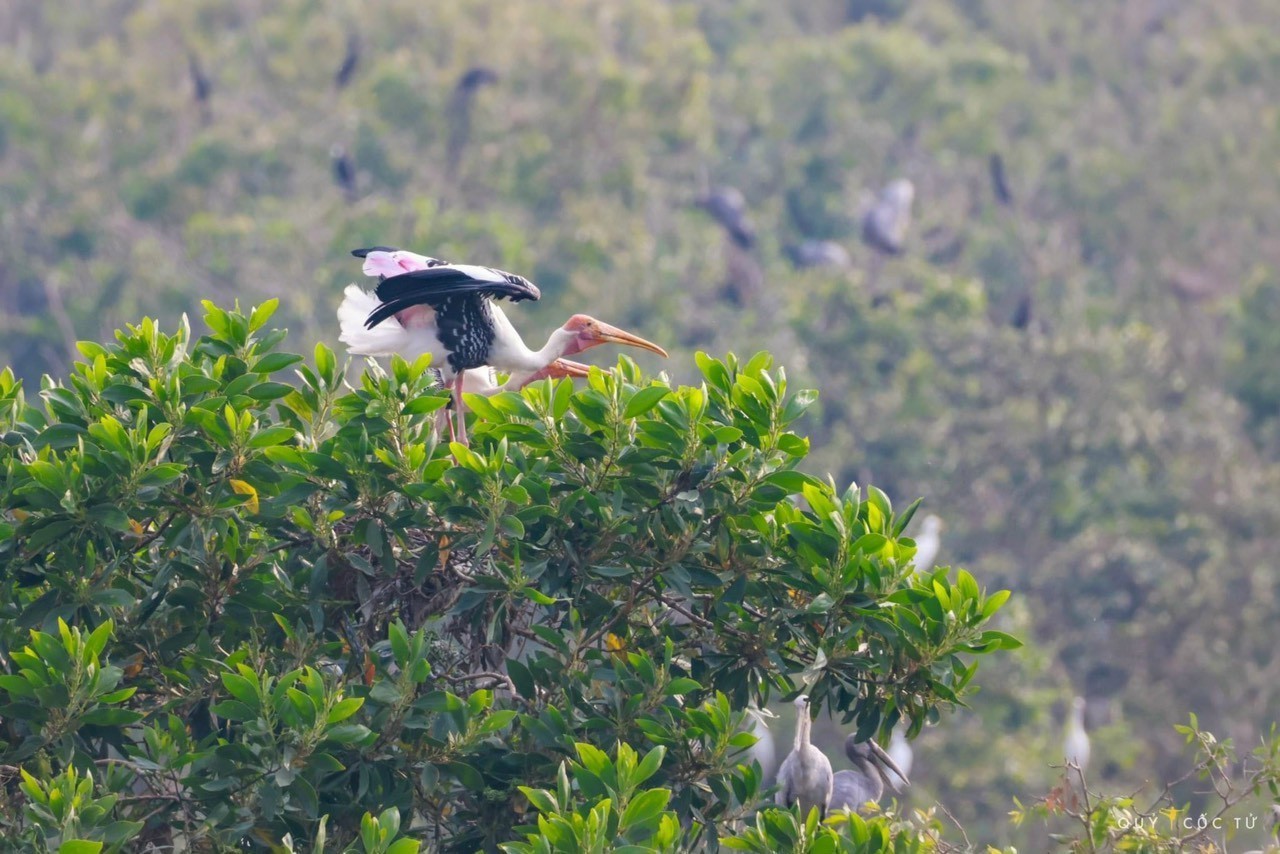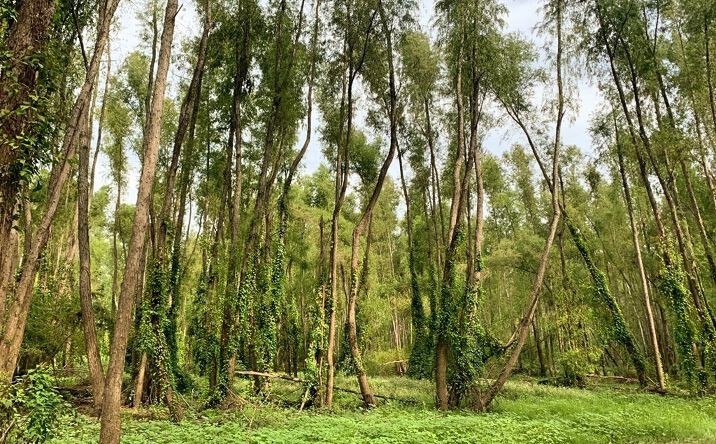
Dong Thap Muoi Ecological Reserve: An "invitation of nature"
Latest
 |
| Attractive tourist destination Dong Thap Muoi Ecological Reserve during Lunar New Year. |
The "dual" heritage of the Southwest is towards green growth
Dong Thap Muoi Ecological Reserve was established in 1999 on over 100 hectares and a 1,800-hectare buffer zone to retain and preserve Dong Thap Muoi region's landscape, endemic flora and fauna. This place is known as a dual heritage because of the beautiful resource reserves and the most original and unique "alum pocket - flood area" of the Southern.
According to the representative of the Board of Directors of Dong Thap Muoi Ecological Reserve, through research, surveys and statistics, there are 156 species of plants, 147 species of birds, 34 species of fish, eight species of amphibians and 30 species of insects to live and develop.
Over the years, the locality has invested in improving infrastructure such as internal traffic, water canals, management houses, protective fences, and creating a natural and wholly isolated habitat for animals and plants to increase and develop. Mainly to prevent destructive fishing and human exploitation, causing the loss of rare plant and animal genetic resources, creating conditions for the recovery of endemic natural resources in Dong Thap Muoi. According to the plan, Tien Giang will continue to invest in expanding the area by 124 hectares in the coming time.
 |
| An early spring afternoon. |
A strict protection policy and a favourable, peaceful and safe living environment are the factors that attract more and more waterbirds to live in Dong Thap Muoi Ecological Reserve. Among them, the most are relatives of storks. The Conservation Area has recently added many rare bird species to the Vietnam Red Book. In particular, dang sen - a giant water bird - has come to live, nest, and give birth in the Dong Thap Muoi ecological reserve.
 |
| Many rare bird species are raised and preserved in the Dong Thap Muoi ecological reserve. |
A strict protection policy and a favourable, peaceful and safe living environment are the factors that attract more and more waterbirds to live in Dong Thap Muoi Ecological Reserve. Among them, the most are relatives of storks. The Conservation Area has recently added many rare bird species to the Vietnam Red Book. In particular, dang sen - a giant water bird - has come to live, nest, and give birth in the Dong Thap Muoi ecological reserve.
Take a canoe along the inland canals leading into the strictly protected central area to see the richness of the precious flora and fauna. Storks, herons, and lotus nest on melaleuca, gua, or ancient cajuput trees.
Under the water, flocks of large and small fish eat the net, snapping at the bait, echoing in the clusters of water hyacinth and water lotus blooming with purple flowers. The bushes are home to reptiles and amphibians, including rare cobras. In the distance, you will see substantial wasp nests under the canopy of ancient trees.
 |
| And we are passionate about the natural flavours of Dong Thap Muoi Ecological Reserve. |
Dong Thap Muoi Ecological Reserve has beautiful natural scenery that preserves many precious and endemic creatures in the Dong Thap Muoi region. With its inherent and unique advantages, this place's great potential for eco-tourism is being exploited by a leading tourism brand enterprise in Dong Thap province.
Dong Thap Tourism Joint Stock Company is skilled in blowing a new breeze into the Ecological Reserve. Establishing a tourist attraction with full transportation facilities and a team of simple, approachable, likeable, and friendly tour guides will guide visitors to beautiful things from the core of Vietnam's Melaleuca forest.
 |
| The place to preserve pristine Melaleuca trees and the habitat of all species at the magical Dong Thap Muoi Ecological Reserve Sightseeing Area. |
Undoubtedly, Dong Thap Muoi Ecological Reserve will be one of the most attractive destinations on the Tien Giang tourism map and in the link to develop tourism in the Dong Thap Muoi sub-region between Tien Giang, Long An, Dong Thap and Ho Chi Minh City. Getting lost among the pure white Vietnamese Melaleuca flower forest on calm, poetic water surfaces is an exciting habit for the Lunar New Year Tet Festival.

















